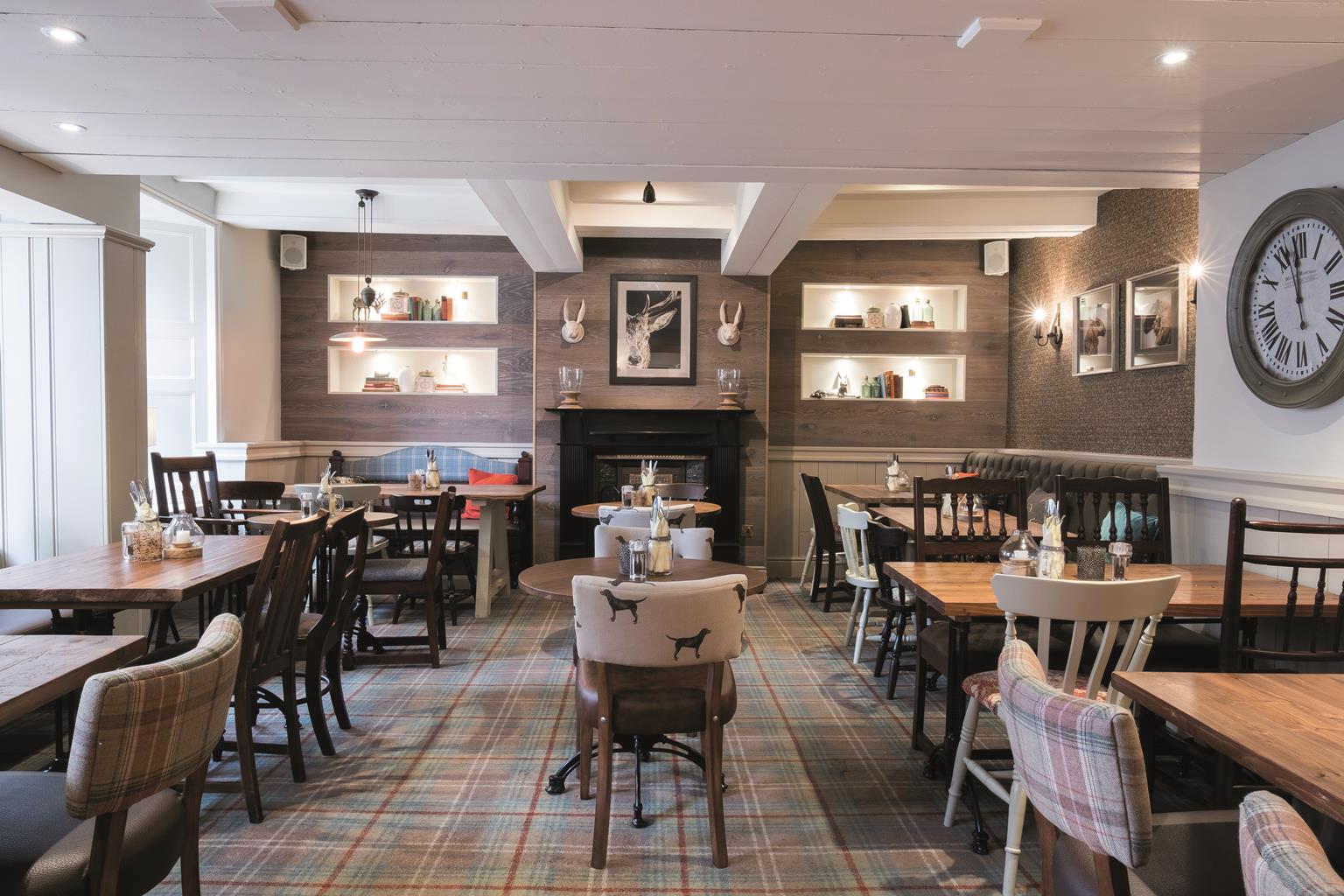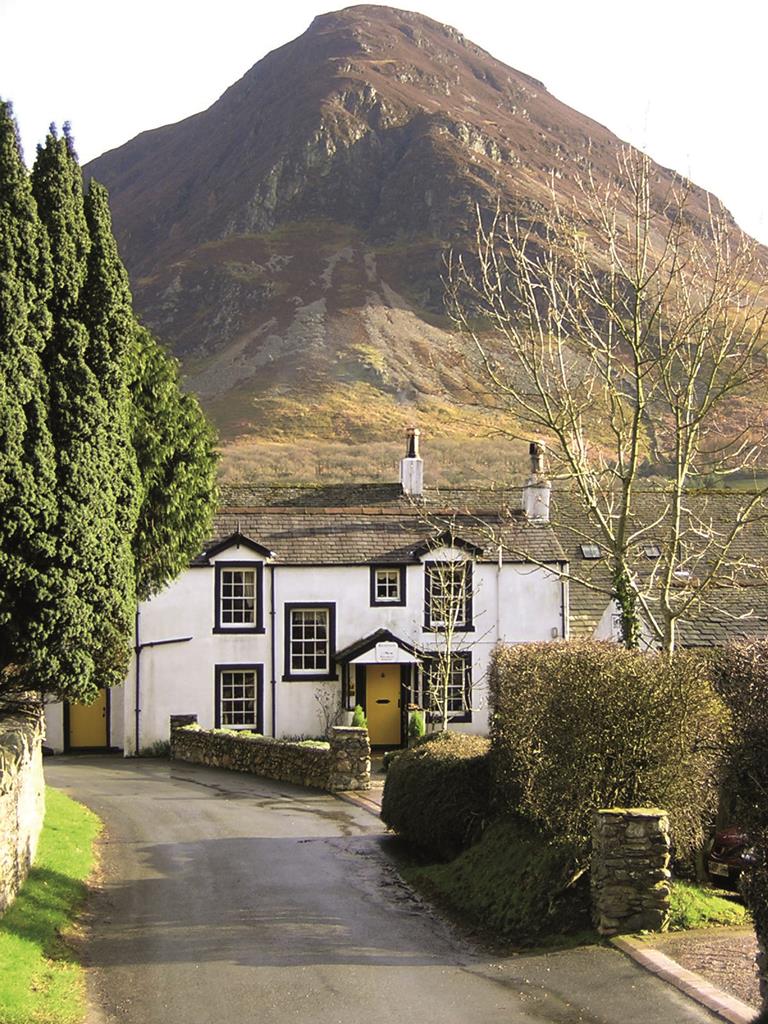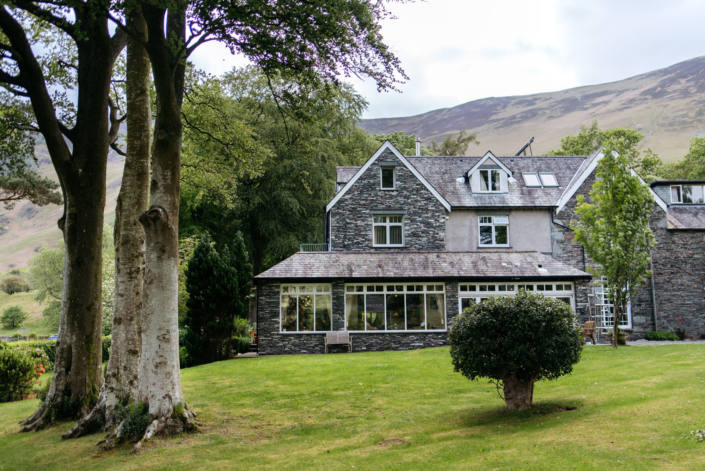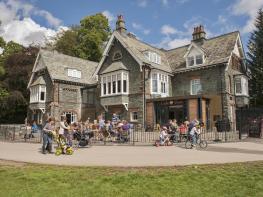As the name suggests, The Cottage in the Wood is a charming restaurant with rooms perched 1,…
Whinlatter Forest Park

A high mountain forest combines gentle trails and more strenuous fell walking.
5 miles (8kms)
About the walk
Whinlatter Forest is a mixed plantation of trees ranging from Sitka and Norway spruce to Scots pine, Douglas fir and Lawson cypress. Look out also for native broadleaves such as birch and oak and the more exotic western hemlock and Japanese larch. Cumbria’s conifer plantations were planted during the early part of the 20th century. Woodland resources were severely depleted by the end of World War I, particularly by trench warfare, so there was a need to rebuild and maintain a strategic timber reserve. The Forestry Act came into force in September 1919 and the new Forestry Commission’s first planting in the Lake District was at Hospital Plantation, Whinlatter, in the same year. The forest provides a habitat for a wide range of wildlife and on this walk you may see roe deer, red squirrels, frogs, toads and foxes, and buzzards, peregrines and many other birds overhead.
One rare species you have a good chance of seeing, depending on the time of the year, is the osprey. A breeding pair of ospreys has been nesting close to Bassenthwaite Lake since 2001, the species previously having been persecuted to extinction in England more than 150 years ago. The huge nest, built by the Forestry Commission and the Lake District National Park Authority, is located in the forest above the lake and is subject to a round-the-clock guard once the female lays her eggs. Ospreys have a wingspan of nearly 5ft (1.5m) and are rich brown in colour with a white head and underside. They’re fish eaters and you are most likely to see one hovering over the lake, its sharp eyes scanning the water for a fish before transforming itself into a feathered missile streaking down unerringly to snag its prey. Ospreys winter in Africa, but return to the Lake District in the spring to breed.
The lower viewing point in Dodd Wood is staffed from April through to the end of August, from 10am to 5pm. High-powered telescopes and binoculars are available during the breeding period. Cameras are also trained on the nest so that visitors can view live footage of the birds on a giant video screen at the Whinlatter Visitor Centre.
Walk directions
The walk starts by heading through the covered walkway between the Forestry Commission shop on your right and the public toilets on your left. Then turn left, following red, blue and green waymarks up the hill and past an adventure play area. On reaching a viewpoint, bear left after the benches, following the green markers to a T-junction. Turn left again to reach Horsebox Crossroads and the No. 2 marker post. Turn sharp right here and continue along the forest road, ignoring a track turning on the right near to marker post No. 3.
As the road makes a sweeping bend to the left, turn right onto a path marked by post No. 24. Head uphill through the forest onto the fellside to another T-junction. Turn left and keep on the path as it climbs and crosses a stile to reach the summit of Lord’s Seat. On a clear day you should be able to see the hills of southern Scotland as well as the high Lakeland fells to the south and east.
Leave the summit by following either of the paths on the east side of Lord’s Seat. After crossing a peaty, often damp area, a single, drier path climbs to the summit of Barf. Below you and stretching away to the right is the Vale of Keswick with Derwent Water, dotted with islands, beyond. There’s also a grand view over Bassenthwaite Lake.
Heading right – down the steep, southern side of the fell – you quickly encounter two paths. Take either, although the one on the right is slightly less exposed. If you choose this one, you will need to turn right in a short while to hug the southern edge of the escarpment. Carefully cross Beckstones Gill and go over a stile into Beckstones Plantation.
Turn left down the track, passing marker post No. 21. Keep ahead on the clear path, climbing steadily to a T-junction at marker post No. 8. Turn left onto the forest road and follow it to another T-junction at marker post No. 9.
Turn right and continue for 440yds (402m) to reach marker post No. 10. Go left down the grassy path. As this bends left, turn left along a narrower path with a red-topped post beside it. This weaves its way down beside Comb Gill to another forest road. Turn right at this junction, still following the red trail. Keep right when the track forks and right again at the next junction, at marker post No. 14. Follow this through a wooden barrier. The Visitor Centre is up to the right, or keep straight ahead for the car park.
Additional information
Good forest paths and tracks, some rough walking, 2 stiles
Forest, fells and lakes
Off lead in forest provided they're under control; on lead on open fell
OS Explorer OL4 The English Lakes (NW)
Pay-and-display parking at the Visitor Centre
At Visitor Centre
WALKING IN SAFETY
Read our tips to look after yourself and the environment when following this walk.
Find out more
Also in the area
About the area
Discover Cumbria
Cumbria's rugged yet beautiful landscape is best known for the Lake District National Park that sits within its boundaries. It’s famous for Lake Windermere, England’s largest lake, and Derwent Water, ‘Queen of the English Lakes'. This beautiful countryside once inspired William Wordsworth and his home, Dove Cottage, in Grasmere is a popular museum. Another place of literary pilgrimage is Hill Top, home of Beatrix Potter, located near Windermere. Tom Kitten, Samuel Whiskers and Jemima Puddleduck were all created here.
Much of Cumbria is often overlooked in favour of the Lake Distirct. In the south, the Lune Valley remains as lovely as it was when Turner painted it. The coast is also a secret gem. With its wide cobbled streets, spacious green and views of the Solway Firth, Silloth is a fine Victorian seaside resort. Other towns along this coastline include Whitehaven, Workington and Maryport. Carlisle is well worth a look – once a Roman camp, its red-brick cathedral dates back to the early 12th century and its 11th-century castle was built by William Rufus.
Nearby stays
Restaurants and Pubs
Nearby experiences
Recommended things to do
Why choose Rated Trips?
Your trusted guide to rated places across the UK
The best coverage
Discover more than 15,000 professionally rated places to stay, eat and visit from across the UK and Ireland.
Quality assured
Choose a place to stay safe in the knowledge that it has been expertly assessed by trained assessors.
Plan your next trip
Search by location or the type of place you're visiting to find your next ideal holiday experience.
Travel inspiration
Read our articles, city guides and recommended things to do for inspiration. We're here to help you explore the UK.













